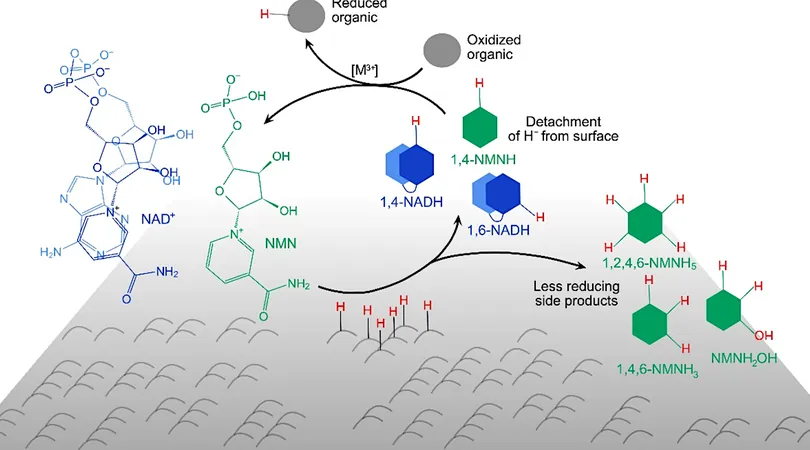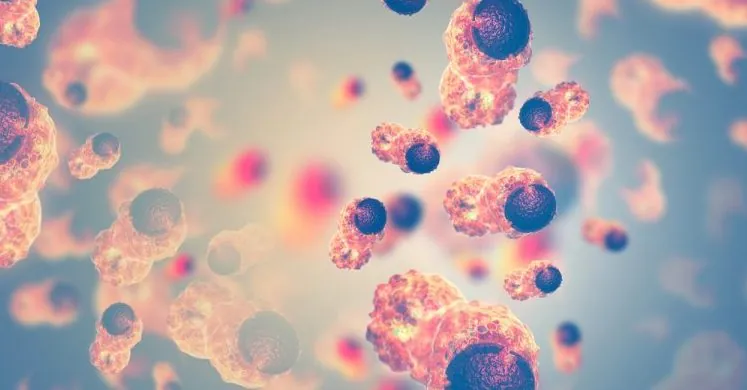
The Surprising Role of Adenosine in Prebiotic Evolution Discovered Through Innovative Experiments
2025-04-08
Author: Sarah
Introduction
In a groundbreaking study, researchers have unveiled the intriguing role of adenosine, a molecular structure commonly found in various cofactors and nucleic acids, in the context of prebiotic evolution. This discovery poses a captivating question: does adenosine act as a biochemical 'handle' that enhances protein binding or is it a remnant from when cofactors originated from the building blocks of genetic material?
Experimental Focus on NAD and NMN
Focusing on nicotinamide adenine dinucleotide (NAD), scientists conducted experiments involving the reduction of NAD and nicotinamide mononucleotide (NMN) on mineral surfaces in the presence of hydrogen gas (H2). These experiments revealed a startling property of NAD related to its adenosine monophosphate (AMP) component.
Controlled Reduction Process
While the handle-free NMN exhibited rapid over-reduction, NAD demonstrated a more controlled reduction process. This distinctive behavior highlights the role of the AMP handle in providing NAD with a protective advantage in hydrothermal and mineral-based environments—often considered pivotal in the emergence of life.
Significance of AMP in Biochemical Processes
This research identifies the AMP moiety of NAD as a key player that not only supports biochemical processes under extreme conditions but also suggests that this structural element predated the enzymes that utilize it. The findings propose that the adenosine component may have facilitated the evolution of early life forms by allowing biochemical reactions to thrive in challenging environments.
Implications for Astrobiology
The implications of this study extend into the field of astrobiology, offering new perspectives on how life could emerge in extraterrestrial contexts, where similar mineral-rich environments may exist. This research not only advances our understanding of the origin of biological cofactors but also opens up exciting avenues for exploring the possibilities of life beyond Earth.
Conclusion
In summary, the pivotal role of the adenosine moiety in NAD presents a fascinating layer to the narrative of life's beginnings, demonstrating how ancient biochemical structures could have shaped the development of life as we know it.




 Brasil (PT)
Brasil (PT)
 Canada (EN)
Canada (EN)
 Chile (ES)
Chile (ES)
 Česko (CS)
Česko (CS)
 대한민국 (KO)
대한민국 (KO)
 España (ES)
España (ES)
 France (FR)
France (FR)
 Hong Kong (EN)
Hong Kong (EN)
 Italia (IT)
Italia (IT)
 日本 (JA)
日本 (JA)
 Magyarország (HU)
Magyarország (HU)
 Norge (NO)
Norge (NO)
 Polska (PL)
Polska (PL)
 Schweiz (DE)
Schweiz (DE)
 Singapore (EN)
Singapore (EN)
 Sverige (SV)
Sverige (SV)
 Suomi (FI)
Suomi (FI)
 Türkiye (TR)
Türkiye (TR)
 الإمارات العربية المتحدة (AR)
الإمارات العربية المتحدة (AR)